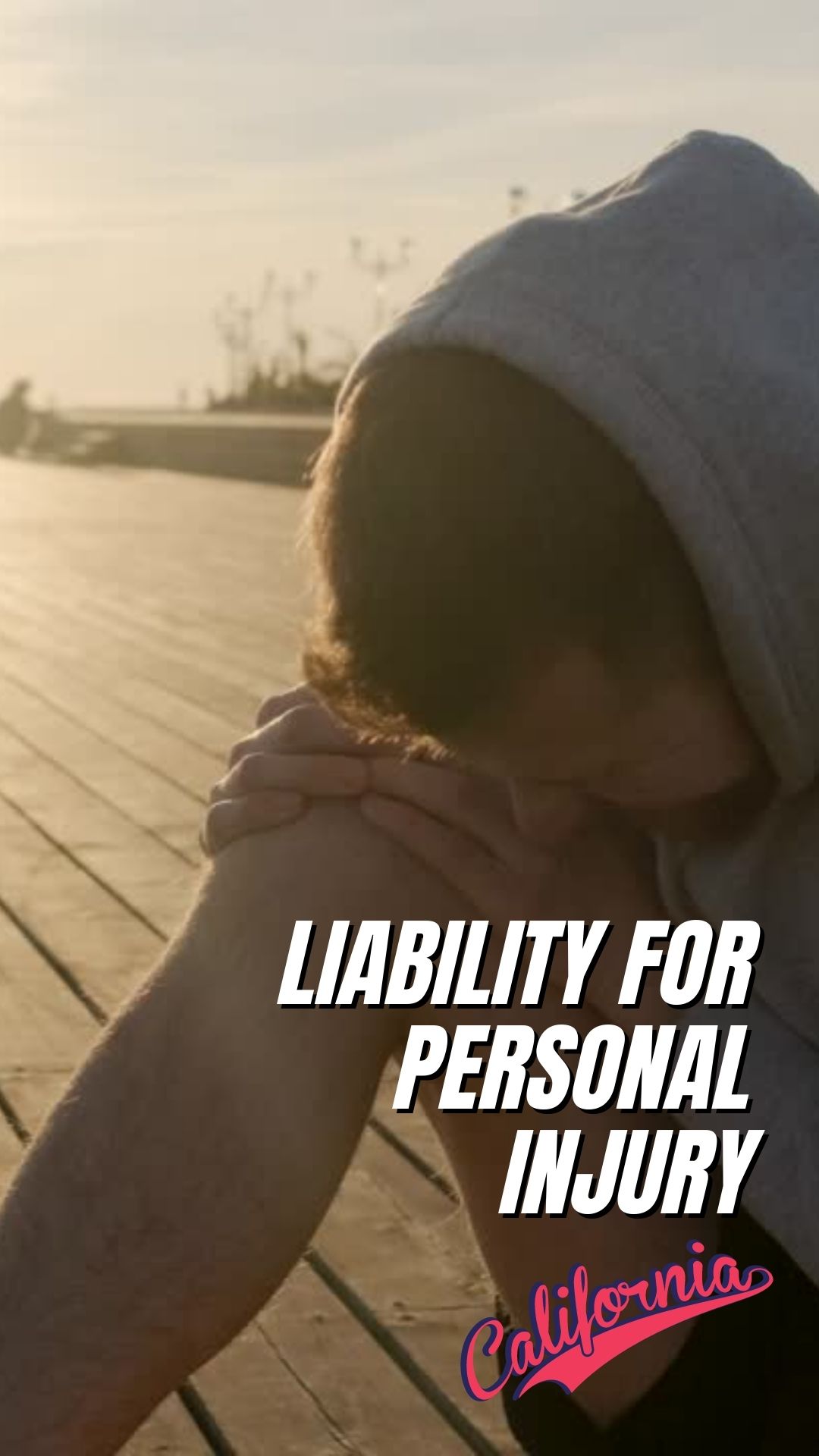Common Personal Injury Examples in Santa Ana CA.
Vehicle accidents are a leading source of bodily harm. These events often result in personal injury claims:✅ Rear-end collisions: When a following vehicle crashes into the back of another due to distracted driving or traveling too fast. Whiplash and back/neck injuries are typical.
✅ Head-on collisions: Opposing vehicles impacting each other head-on, often at high speeds. Severe trauma results from being hit from the front, like broken bones and internal injuries.
✅ T-bone crashes: A vehicle striking the passenger side of another traveling through an intersection. Door impact and side collisions lead to specific shoulder and rib injuries.
✅ Rollovers: If an automobile rolls over during accident maneuvers or due to a defect. Even belted occupants can be ejected, resulting in skull fractures or brain injuries.
✅ Pedestrian/cyclist accidents: Any non-motorized road users hurt through no fault of their own, such as being right-hooked by a turning vehicle. Road rash, broken limbs, and traumatic brain injuries often happen.
✅ Workplace accidents: Workplace injuries include construction accidents, dangerous premises accidents, slip-and-fall accidents, and faulty goods.
✅ Medical malpractice: Doctor carelessness or improper treatment: Medical malpractice.
✅ Workplace accidents: Construction accidents, accidents on unsafe premises, slip and fall accidents, and defective products are all examples of personal injury cases that pertain to the workplace.
✅ Medical malpractice: Injuries caused by a doctor's negligence or inappropriate treatment.
✅ Dog bites: Dog owners are accountable for their dogs. wrongful death: A legal lawsuit for death caused by another.
Product liability: A manufacturer's obligation for their product.
Motor Vehicle Accident Injuries
❓ Can I be at fault in a car accident and still file a personal injury claim?A: Maybe. Contributory negligence rules apply, so an injury claim could still succeed if you were less than 50% at fault. Consult a car accident lawyer.
❓ How long do I have to file an injury lawsuit after a wreck?
A: Statutes of limitations vary by state but are typically 2-3 years from the incident date or when injuries were discovered. Act promptly to maximize chances of compensation.
❓ What should I do if injured in a motor vehicle accident?
A: Call emergency services if needed. Obtain police report. Seek medical attention, document injuries, and consult an experienced car accident attorney as soon as practicable.

What are the most common types of personal injury?
If you were wounded without negligence, you should know the many forms of personal injury claims. Some of the most common:✅ Car accidents: Injury claims are most often triggered by rear-end incidents, head-on collisions, and careless driving.
✅ Slip and falls: Slipping on spilled liquids or tripping on uneven surfaces are common premises liability incidents that occur regularly.
✅ Workplace injuries: On-the-job accidents involving heavy machinery, hazardous work conditions or OSHA violations lead to many injury claims.
✅ Medical malpractice: Errors, misdiagnoses or lack of informed consent by doctors, nurses and healthcare facilities make up a large portion of personal injury lawsuits.
✅ Product defects: Manufacturing flaws, design issues or inadequate safety warnings with items like tools, appliances or vehicles often cause harm.
Types of Personal Injury Examples Santa Ana FAQs
❓ How do I know my personal injury lawsuit is valid?A: Get a free personal injury lawyer examination. Your medical records and circumstances may be reviewed.
❓ What type of compensation may I get?
A: Medical costs, lost pay, pain/suffering, disability, and punitive judgments for deliberate or wanton misbehavior are damages.
❓ What should I do if hurt?
A: Seek medical attention, record information, collect evidence, and call an expert personal injury lawyer immediately for the strongest claim.
Consulting with Martinez Law Center can help determine if you may be eligible to file a personal injury claim or lawsuit.
What are the 5 most common types of Personal Injury Examples Santa Ana?
Body injuries
Certain injuries tend to recur in many personal injury claims due to the nature of the incident. Here are 5 frequent case types and their characteristic bodily harms:✅ Car accidents: Whiplash, concussions, broken bones and back/neck injuries from collision forces. Other internal injuries can occur from seatbelt impact.
✅ Slip and falls: Head traumas, fractures and dislocated bones from hitting the ground. Knee, hip and wrist injuries are prevalent from falls.
✅ Workplace accidents: Lacerations, crushed limbs and amputations due to heavy machinery. Burns, lung diseases and joint issues arise also from industrial hazards.
✅ Medical malpractice: Surgical mistakes leading to chronic pain, nerve damage or lost organs. Misdiagnoses causing permanent disabilities that could have otherwise been avoided.
✅ Crime-related assaults: Gunshot and stab wounds, brain injuries from beatings, and long-term psychological trauma from any attack crimes.
❓ How long do injury effects last?
A: It depends on factors like treatment, rehabilitation and injury severity. Chronic issues can develop even with 'minor' initial harm.
❓ What body parts require the most care?
A: The head, spine, joints and limbs - due to their perpetual use and vulnerability to traumatic force impacts. Early specialized treatment is crucial.
Consulting a personal injury lawyer familiar with your case type ensures any eligibility for compensation is properly addressed.
What are the different types of personal injuries?
When someone is harmed through no fault of their own, determining the precise injury classification can impact the legal approach. Here are the key distinctions:✅ Bodily injury refers only to physical wounds and medical conditions affecting the body. It does not include broader damages.
✅ Personal injury encompasses both physical and non-physical wounds. It covers economic losses like missed wages as well as pain and suffering - the mental/emotional trauma of the event.
✅ Examples that could constitute personal but not bodily injury are defamation of character, false imprisonment, or invasion of privacy torts which cause psychological/reputational harm.
✅ However, most accidents or crimes against the person like assault/battery would represent both bodily and personal injury.
Is there a difference between bodily injury and personal injury?
❓ What types of personal injuries are there beyond just physical?A: Some examples include wrongful death of a loved one, loss of consortium and property damage cases.
❓ Can you claim compensation for just mental anguish or is a physical injury needed?
A: It depends on the situation and claims being made. An attorney can assess the specifics to see if non-physical harms are actionable alone or require linked physical wounds too.
Understanding the injury classification assists in determining the most suitable legal approach, so consult an experienced personal injury lawyer for an evaluation of your unique circumstances and options for remedy.
Can you claim for pain and suffering?
Examples of pain and suffering settlements
One important category of damages pursued in many personal injury lawsuits is compensation for pain and suffering. Here are some examples that demonstrate how non-economic harm is assessed:✅ A car accident victim broke her leg, requiring multiple surgeries and skin grafts. After 2 years of physical therapy, she was awarded $100,000 for pain endured and ability to fully enjoy hobbies diminished.
✅ A man slipped at a big box store and herniated disks in his back, necessitating spinal fusion surgery with chronic residual pain. He received $175,000 settlement for daily discomfort and lost quality of life.
✅ A child suffered traumatic brain injury in a dog attack, causing seizures, learning disabilities and anxiety attacks. She was granted $300,000 for past and future psychological/physical distress.
❓ How is pain and suffering quantified financially?
A: Awards are based on severity/duration of the injury, treatments required, impact on activities/relationships, and expert medical testimony regarding percentages of permanent impairment.
❓ What's the highest pain and suffering verdict on record?
A: Over $70 million was ordered in one case, albeit most averages range from $150K to $500K depending on specifics. Having strong evidence of impacts maximizes the potential value.
❓ Is there a cap on pain and suffering damages?
A: Some states impose limits by law, but insurance policy maximums may still allow for higher potential compensation amounts in severe injuries with serious lifelong consequences.
Documenting all hardships thoroughly aids an attorney in helping clients receive full and fair value for all non-economic aspects of what they have endured from their injuries.
What is covered in personal injury?
When injured through no fault of your own, it's important to understand what types of costs and damages may be compensated through a personal injury insurance claim or lawsuit.Personal injury coverage encompasses:
✅ Medical expenses - All reasonable and necessary costs for doctors, surgery, prescriptions, physical therapy, ambulance transport, prostheses, etc. incurred as a result of the incident.
✅ Lost wages - Income lost from being unable to work or function at full capacity during treatment and recovery.
✅ Pain and suffering - Monetary value placed on physical/emotional hardship and reduced quality of life due to injuries.
Personal injury vs bodily injury
✅ Punitive damages - If injuries stemmed from willful misconduct, additional penalties may be awarded.Bodily injury coverage is narrower, focusing only on:
✅ Direct physical wounds and associated medical bills. -Temporary/permanent disability from impairment rating.
It excludes pain/suffering, loss of enjoyment of life, lost future earnings potential or punitive damages.
❓ What's the difference between my health insurance and personal injury protection? A: Health insurance covers routine/preventive care, while PIP focuses solely on incident-related injuries through no fault of your own.
❓ How can I pursue compensation not covered under bodily injury? A: Consultation with a personal injury attorney experienced in negligence cases can help determine options like liability claims or uninsured motorist coverage.

How do you calculate emotional pain and suffering?
What are 10 common Personal Injury Examples in Santa Ana CA.
When someone has experienced physical, mental and emotional trauma due to another's negligence, determining a monetary value for pain and suffering is complex. Attorneys consider:✅ Nature/severity of the injury - Broken bones heal differently than chronic pain.
✅ Treatment required - Surgeries or long-term care means greater hardship.
✅ Length of recovery - Lingering effects cause extended life disruption.
✅ Impact on activities/relationships - If hobbies/ intimacy are limited.
✅ Testimony from doctors/therapists - Expert opinions on impairment level.
10 injuries commonly seen in personal injury claims include:
✨Whiplash✨Concussions
✨Herniated/bulging discs
✨Broken bones
✨Sprains/strains
✨Scarring
✨Burns
✨Tendon/ligament tears
✨Traumatic brain injuries
✨Back/neck complications
❓ Can pain be monetary valued?
A: Courts believe the jury/judge system provides fair assessments based on each unique circumstance. Guidelines/calculations help but discretion matters most.
❓ What's the highest reported pain and suffering payout?
A: Over $100 million was awarded in one case involving lifelong paralysis and care requirements. But $300K-500K averages are more typical.
Consulting an experienced personal attorney ensures thorough case valuations.
How is mental pain and suffering calculated?
What is total pain suffering?
Establishing a monetary value for emotional and psychological hardships caused by injuries can be nuanced. Attorneys delve into:✅ Medical records showing need for counseling/therapy or diagnoses like PTSD/anxiety.
✅ Evidence applicant can no longer participate in enriching activities or hobbies.
✅ Impacts to personal/family relationships as a result of change in victim's personality/mood.
✅ Any lost career opportunities or advancement due to cognitive limitations.
✅ Life care plans outlining projected future treatment costs.
Total pain and suffering takes into account both physical and mental pain over the past, present and future. It represents compensation for:
✅ Debilitating effects on quality of life and ability to function normally.
✅ Feelings of depression, fear, flashbacks or shortened temper that would not exist without injury.
✅ Embarrassment or self-consciousness due to scars or needing aids/therapy.
❓ Is pain separately valued or all together?
A: Courts see physical and emotional disturbances as interconnected, so one overall total pain and suffering calculation encompassing all aspects is typical.
❓ What's the statute of limitations to claim?
A: Generally 2-3 years from incident/discovery, so consulting a personal injury attorney promptly is important to protect eligibility to recover all damages.
Is emotional distress the same as pain and suffering?
How do you value pain?
While emotional distress and pain/suffering compensation categories may seem interchangeable, there are nuanced legal differences:✅ Emotional distress refers to short-term, episodic mental harm from an isolatable event like loss of a loved one or severe fright.
✅ Pain and suffering captures long-term, ongoing burdens like persistent physical/emotional limitations, embarassment or deterioration of life activities.
When assessing appropriate monetary value of pain, attorneys consider several qualitative factors:
✅ Objective medical evidence - Doctors can rate intensity, frequency of flare-ups, impact on ADLs, needed future treatment.
✅ Testimony from plaintiff & witnesses - Details about magnitude of suffering provide context.
✅ Treatment costs - Expenses already incurred, as well as life care plan projections.
✅ Vocational/economic analysis - Impact on earning ability, independence, hobbies.
✅ Similar past awards for comparable injuries - Provides frame of reference.
❓ How do I know if I qualifiy?
A: Consult with a personal injury attorney. Most will offer free case evaluations to determine viability.
❓ Is there a limit on pain and suffering awards?
A: Yes, caps have been enacted in some states. Insurance policies and severity of injury may also influence ceiling amounts.
How do you prove personal injury?
What is a serious personal injury?
Establishing a personal injury claim requires competent evidence that one was harmed through another's negligence or wrongdoing. Some key elements of proof include:✅ Medical records - Doctor notes, test results, charts showing treatment course substantiate injury occurred.
✅ Witness statements - Others who saw the accident play out or can attest to lasting health issues.
✅ Photos/videos - Visual documentation showing injuries, dangerous conditions or reckless behavior.
✅ Expert testimony - Physicians explaining prognosis, impairments, future treatment needs.
A serious personal injury would involve:
✅ Broken bones or debilitating soft tissue damage requiring extensive recovery.
✅ Severe head traumas leading to cognitive deficits or mobility issues.
✅ Extensive scarring or disfigurement causing life-long self-consciousness.
✅ Gruesome injuries necessitating multiple surgeries or amputations.
✅ Chronic conditions like Complex Regional Pain Syndrome resulting in longterm disability.
❓ How long do I have to file a claim? A: Statute of limitations is typically 2-3 years from injury date or discovery, so seek counsel promptly to evaluate the case.
❓ Are car accident injuries always serious?
A: Not necessarily, but certain crashes or injuries involving hospitalization, ongoing treatment or disability would certainly qualify as serious.
Pain and suffering claim without lawyer
What are the 4 main types of injuries?
While self-representing for pain and suffering damages is possible in small claims court, involving an attorney is typically advisable given injury claim nuances.The 4 major injury categories include:
✨Soft tissue injuries - Sprains, strains, whiplash affecting muscles, tendons and ligaments.✨Orthopedic injuries - Fractures, dislocations impacting bones and joints like knees, shoulders, spine.
✨Traumatic injuries - Burns, lacerations, amputations causing external body wounds.
✨Internal injuries - Concussions, internal organ injuries like ruptured spleen from forceful blows.
Key disadvantages filing without counsel include:
✅ Lack of experience negotiating complex insurance settlements.✅ Difficulty obtaining full reimbursement for medical bills, lost wages, future treatment costs.
✅ Risk of missing deadlines, not understanding defenses/counterarguments.
❓ What documents do I need to represent myself?
A: Thorough medical records, lost wage verification, photos/repair bills, police/expert reports, liability admissions if any.
❓ Is there funding for personal attorneys?
A: In some injury cases involving serious financial losses, attorneys may work on a contingency basis and advance costs.
While self-representation saves money, an attorney ensures all angles of the case are addressed to maximize potential recovery.

